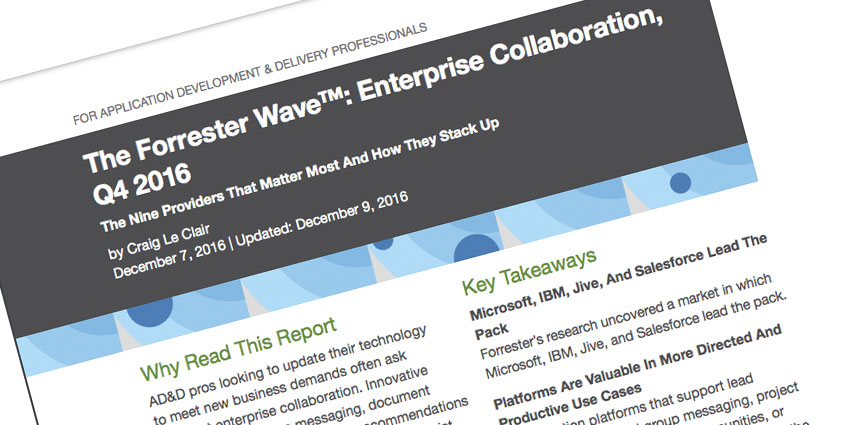As we progress further in 2017 and digital evolution continues, the chances are that we will hear plenty of new claims for leadership in the world of collaboration. However, as always, those that achieve the leadership top spots will be identified based on definitions of collaboration that are shaped to match the product offerings of a vendor, rather than the needs of the users and enterprises that deliver such products and services.
During December 2016, Forrester provided the communication industry with their perspective on the topic of “collaboration” in the form of the Forrester Wave report.
Analysing the Wave Report
Forrester begins their definition of collaboration by saying that technologies for collaboration represent a crucial part of enhancing and improving the digital business network. These services allow for the sharing of information, the tracking of expertise, and the coordination of projects over huge, even global environments. In simple terms, collaboration technologies are a method of supporting certain portions of a collaborative business process. Collaboration can’t be narrowed down to simply a video session or phone call – instead, it’s a process that contributes to outcomes like marketing campaigns, product development, corporate strategies, and more.
These coloration activities represent specialised functions in an enterprise. Within most vertical industries, employee collaboration roles count for about 20% of the full employee base, and most employees work in roles focused around transactions to produce and deliver the services and products that were delivered through collaborative activities. While we often hear claims in this industry that various vendors are redefining the industry by delivering more collaboration to every employee, the truth is that the collaboration technologies needed in most industries are only needed for a specific area of an enterprise.
Categories of Collaboration
Throughout the remainder of the Wave Report, Forrester goes on to define six broad categories for collaborative technology, including Unified Communications which are supported by vendors like Cisco, Avaya, and Microsoft. The other categories include:
- Document Collaboration (Dropbox, VMware)
- Lead Application Collaboration (Salesforce, SAP)
- Collaborative Work Management (Smartsheet, Clarizen)
- Enterprise Collaboration (IBM, Microsoft, Salesforce)
- Team Messaging (Facebook, Slack)
The segmentation that can be achieved throughout collaboration efforts highlights the fact that technologies often align with the work being performed. Forrester notes that Enterprises often turn to collaboration from a “decentralised” perspective. In other words, users are likely to use collaboration technology based on the functional departments in which they work.
Choosing Collaborative Technologies
Beyond just identifying collaboration for the current industry, Forrester also goes on to offer help in choosing the right solutions for each business. During the Wave Report, they list nine companies, with five categorised as leaders (IBM, Salesforce, Microsoft, Jive, and Atlassian). Of the five, only Microsoft also works in the category of Unified Communications, though most would claim to be a collaborative communication platform. For a vendor to be included in this category, Forrester Wave suggest the need for vendor capability in everything from user home pages, to internal and external group capabilities, team messaging, and web conferencing.
As always, it’s crucial to stay on top of the rapid adoption and emergence of collaboration technology in today’s expanding industry. The latest Wave Report from Forrester helps us to better understand how some of the industry leaders define collaboration, and the technology that can be used to help us achieve it.
Are Consumer Brands Set to Take Over the Enterprise Software Market?







